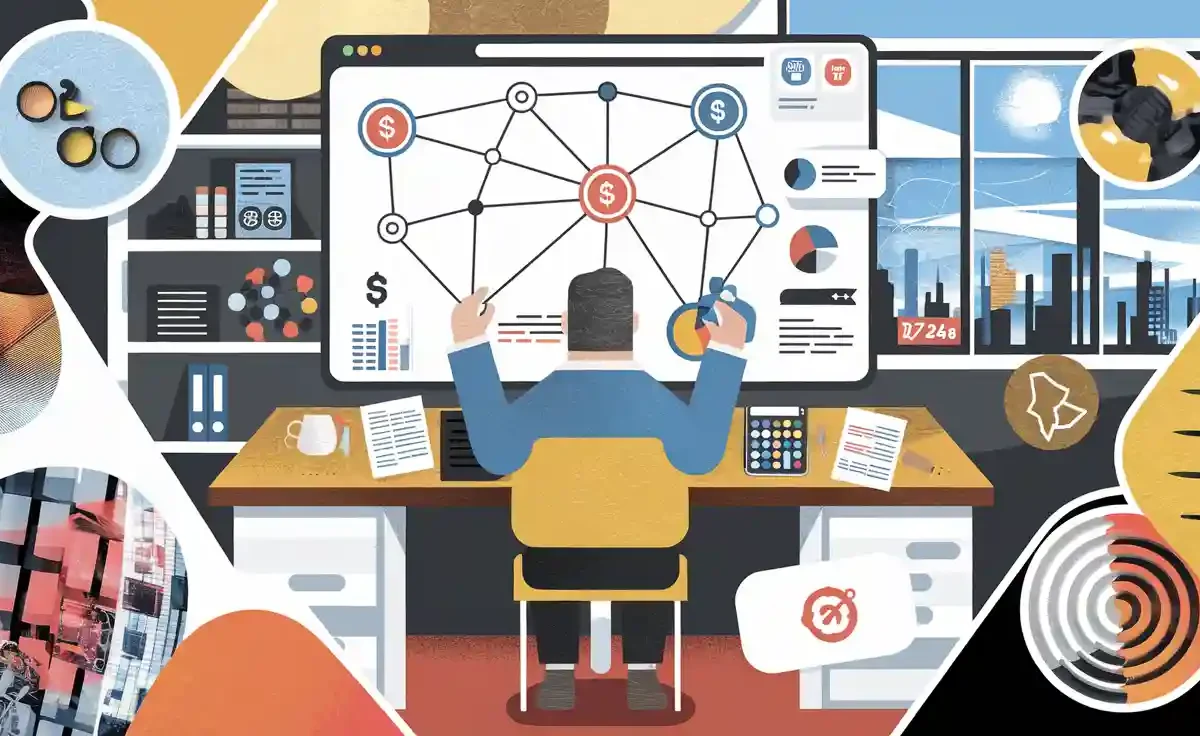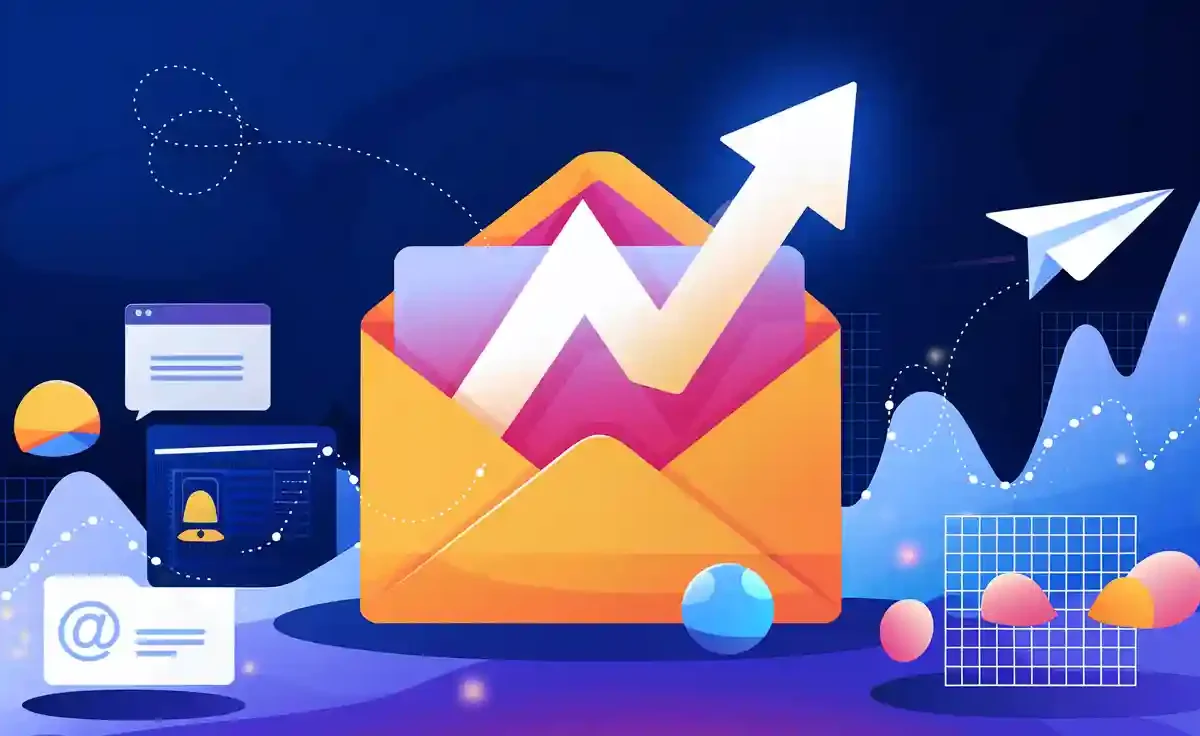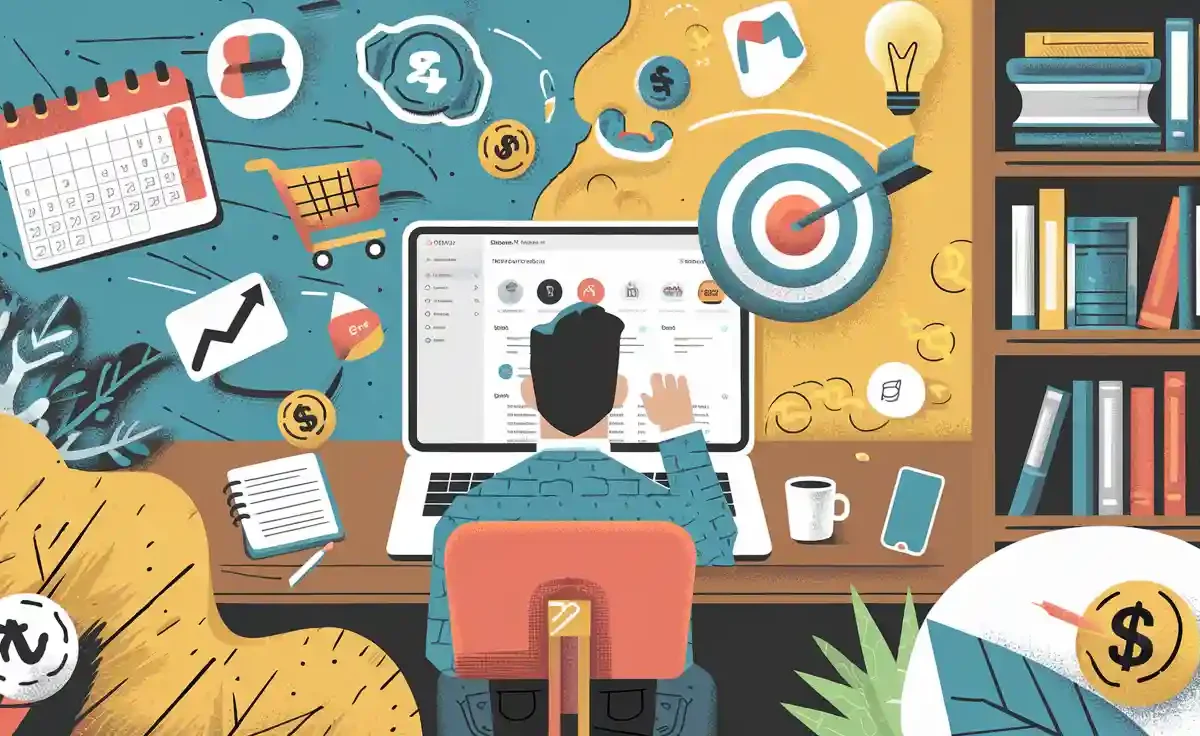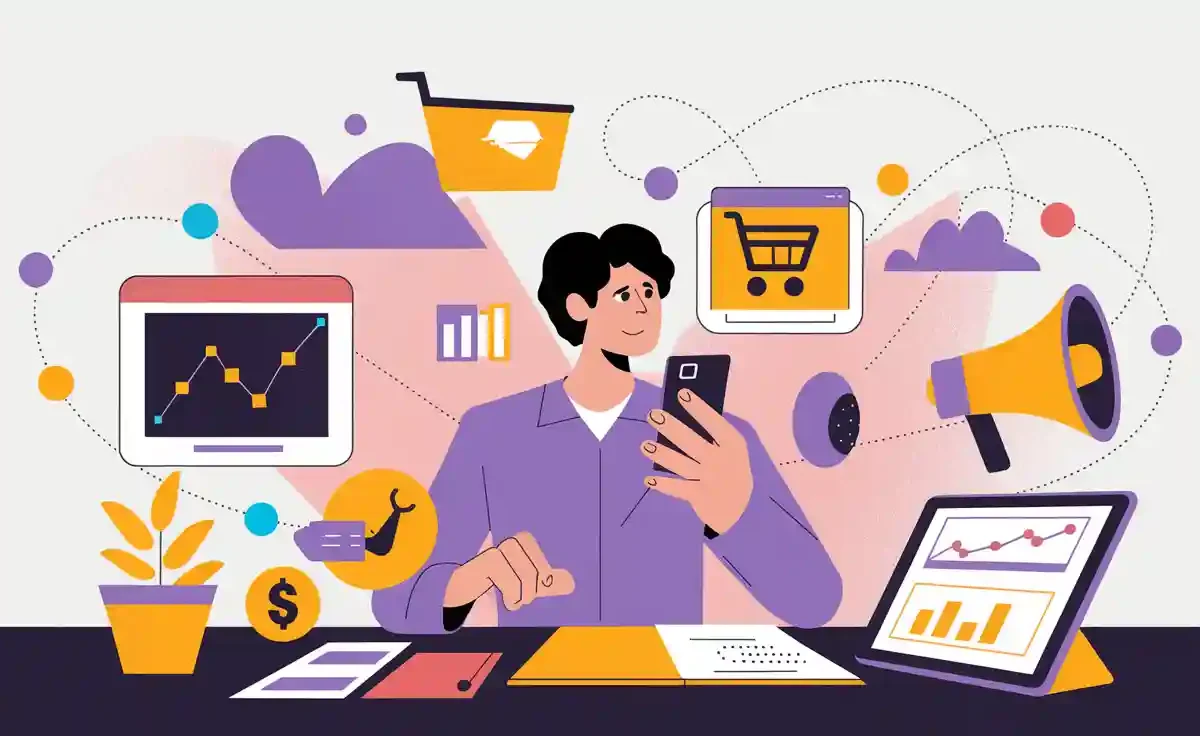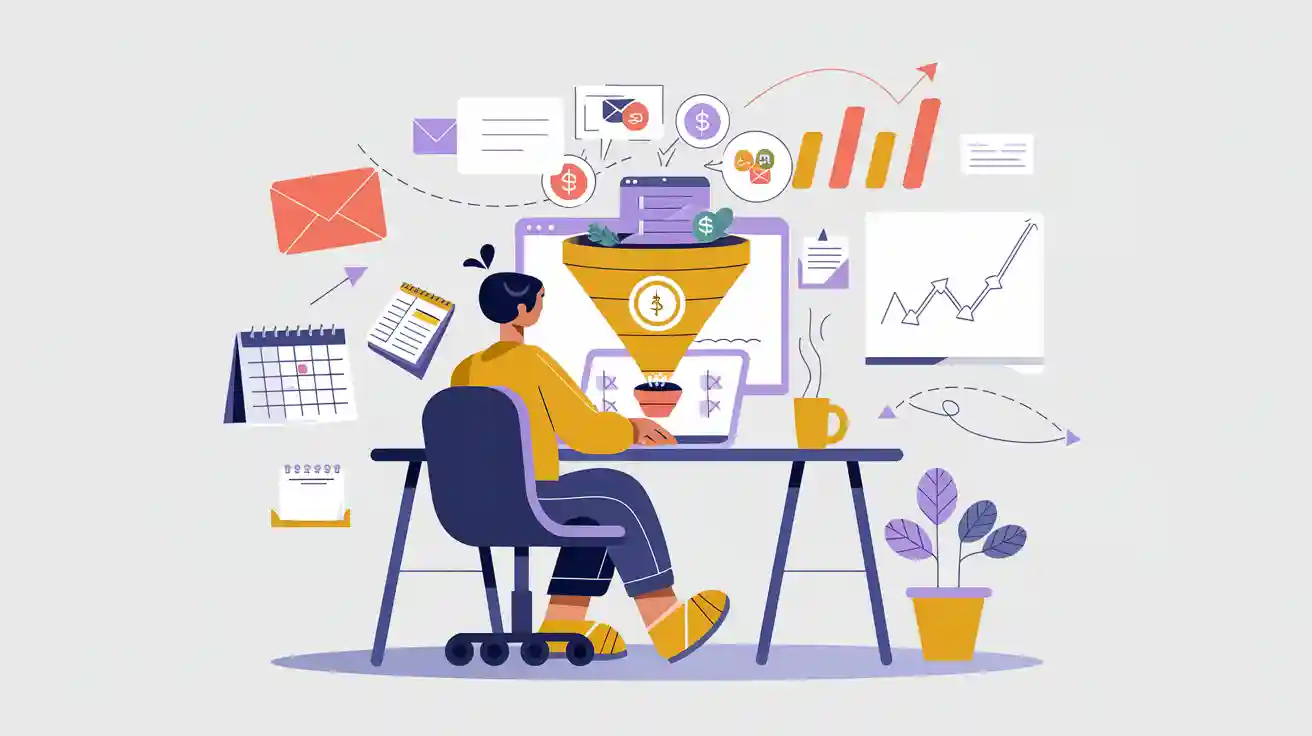
Imagine earning $1000 every month by simply automating your email marketing. That’s the power of an email sales funnel. It’s a system that nurtures relationships with your subscribers, educates them about your products, and encourages them to make a purchase—all on autopilot. With tools that track open rates, clicks, and conversions, you can easily identify what works and refine your strategy. Automation platforms make it simple to personalize content and tag contacts based on their actions, boosting your chances of success. Building a sales funnel isn’t just effective; it’s accessible to anyone willing to start.
Key Takeaways
Know who your audience is to make better messages. Understanding them helps you talk to them the right way.
Create something useful that solves a problem. This will make people share their info and join your email list.
Make a simple landing page. Use a strong title and clear action button to get more sign-ups.
Set up automatic emails to save time and work better. Automation sends the right emails at the right time without extra effort.
Check how your funnel is doing often. Use data to find problems and make it work better.
Understanding the Email Sales Funnel
What is an Email Sales Funnel?
An email sales funnel is a structured process that guides potential customers through their journey from awareness to purchase using email marketing. Think of it as a roadmap that helps you connect with your audience at every stage of their decision-making process. By delivering personalized and relevant content, you can build trust, nurture relationships, and ultimately drive conversions.
Studies show that 80% of sales require follow-up interactions, and email marketing plays a critical role in this process. With an average open rate of 21.5% and segmented emails achieving a 300% higher click-through rate, a well-designed email marketing funnel can significantly boost your results. It’s not just about selling; it’s about creating a seamless experience that keeps your audience engaged and loyal.
How Does an Email Marketing Funnel Work?
An email marketing funnel works by engaging your audience with tailored content at each stage of their journey. It starts with awareness, where you introduce your brand and capture attention. Next comes consideration, where you provide valuable information to help prospects evaluate your offerings. Finally, the conversion stage encourages action, such as making a purchase or signing up for a service.
Personalization is key to making this process effective. By addressing your audience’s specific needs and interests, you can increase engagement and build trust. Metrics like open rates, click-through rates, and conversions allow you to measure performance and optimize your strategy for better results. This approach not only drives sales but also fosters long-term customer relationships.
Key Stages of a Sales Funnel
Every successful sales funnel consists of four key stages:
Awareness: Attract potential customers by introducing your brand and offering value through lead magnets like free guides or webinars.
Consideration: Share compelling content, such as case studies or testimonials, to help prospects evaluate your product or service.
Conversion: Use targeted emails with clear calls-to-action, discounts, or limited-time offers to encourage purchases.
Onboarding and Retention: Engage new customers with welcome emails and helpful resources to ensure satisfaction and build loyalty.
By understanding these stages, you can create an email marketing funnel that not only converts but also retains customers, increasing their lifetime value.
Why You Should Create a Sales Funnel
Benefits of an Email Sales Funnel
An email sales funnel offers numerous advantages that can transform your business. It simplifies the customer journey by delivering personalized content at the right time. This approach not only builds trust but also drives higher engagement with your audience. Marketing automation tools make it easier to nurture leads, saving you time and resources.
Studies reveal that leads nurtured through an email marketing funnel make purchases that are 47% larger than those who are not. Personalized emails also achieve transaction rates six times higher.
Additionally, email consistently ranks as one of the most effective channels for engagement. By creating tailored content, you can guide prospects through each stage of the funnel, increasing the likelihood of conversions. This strategy ensures that your efforts yield measurable results.
ROI of Building an Effective Sales Funnel
The return on investment (ROI) from an effective sales funnel is undeniable. Email marketing delivers some of the highest ROI in the digital marketing world. According to OptinMonster, businesses can achieve an ROI of up to 4,400%, meaning you earn $44 for every $1 spent. Even conservative estimates from Litmus report a 3,800% ROI, or $38 for every $1 invested.
This financial benefit stems from the ability to automate processes, target specific audiences, and track performance. By investing in a well-designed email marketing funnel, you can maximize your revenue while minimizing costs. The long-term gains far outweigh the initial setup effort.
Real-Life Examples of Successful Funnels
Many businesses have achieved remarkable success with email sales funnels. Netflix uses personalized recommendations to keep subscribers engaged and drive renewals. Groupon excels at creating urgency with limited-time offers, converting prospects into buyers. SubTo leverages automation to nurture leads and boost conversions.
Close CRM provides another excellent example. By focusing on high-quality leads and using effective follow-up emails, they’ve turned prospects into loyal customers. In one case, a client saw a 30% increase in demo bookings due to well-timed email sequences. These examples highlight the power of a well-executed sales funnel in driving results.
Tools to Build an Effective Sales Funnel
Best Email Marketing Platforms
Choosing the right email marketing platform is essential for building a successful email marketing funnel. These platforms help you automate your email campaigns, segment your audience, and track performance metrics. Popular options include Mailchimp, ConvertKit, and ActiveCampaign. Each offers unique features tailored to different needs.
Mailchimp is ideal for beginners. It provides user-friendly templates and robust analytics tools. ConvertKit focuses on creators, offering advanced tagging and segmentation features. ActiveCampaign excels in automation, allowing you to set up complex workflows with ease.
When selecting a platform, prioritize ease of use, scalability, and integration capabilities. A reliable platform ensures your auto-responder emails reach the right audience at the right time, boosting engagement and conversions.
Lead Generation Tools for Your Funnel
Lead generation tools play a critical role in capturing prospects and driving them into your email marketing funnel. Opt-in forms are the cornerstone of lead generation. Tools like Leadpages, OptinMonster, and Thrive Leads simplify the process of creating high-converting forms.
Leadpages offers customizable templates that integrate seamlessly with your email marketing strategy. OptinMonster specializes in pop-ups and exit-intent forms, helping you capture leads before they leave your site. Thrive Leads provides advanced A/B testing features to optimize your opt-in forms for maximum conversions.
Use these tools to create compelling opt-in forms that highlight your lead magnet’s value. A well-designed form encourages visitors to subscribe, ensuring a steady flow of leads into your funnel.
Analytics Tools to Track Funnel Performance
Tracking your funnel’s performance is crucial for optimizing your email campaign. Analytics tools provide insights into how prospects interact with your funnel, helping you identify areas for improvement. Google Analytics, HubSpot, and ClickFunnels are excellent options for monitoring metrics.
These tools measure key performance indicators across different stages of your funnel. For example:
Metric Type | Description |
|---|---|
Assess audience awareness about your product in the initial stage. | |
Lead Acquisition Metrics | Track marketing efforts for capturing and qualifying leads. |
Interest and Consideration Metrics | Analyze the interest level of your prospects. |
Evaluation and Intent Metrics | Signal that customers are evaluating your solutions and have shown buying intent. |
Purchase Metrics | Directly indicate the performance related to purchases. |
Post-Purchase Metrics | Necessary metrics that depend on marketing activities after the initial purchase. |
By leveraging these tools, you can refine your email marketing strategy and improve your funnel’s efficiency. Use the data to adjust your auto-responder sequences, optimize opt-in forms, and enhance your email campaign’s overall impact.
How to Create a Sales Funnel Step-by-Step

Step 1: Define Your Target Audience
To create sales funnels that convert, you must first define your target audience. Understanding who you’re speaking to allows you to craft messages that resonate. Start by collecting data on demographics, interests, and behaviors. Use this information to build detailed buyer personas. These personas should represent your ideal customers and guide your email marketing funnel strategy.
Segment your audience based on their engagement levels, lifecycle stages, or content preferences. For example:
Group subscribers by how often they open emails or click links.
Tailor onboarding sequences for new customers and loyalty rewards for returning ones.
Re-engage inactive subscribers with special offers or fresh content.
Segmented email campaigns achieve 14.32% higher open rates and 100.95% higher click-through rates. They also contribute to 58% of total email marketing revenue.
By focusing on segmentation, you can deliver personalized content that drives results.
Step 2: Develop a High-Value Lead Magnet
A high-value lead magnet is the cornerstone of building a list for your email marketing funnel. It’s an incentive that encourages visitors to share their contact information. To succeed, your lead magnet must solve a specific problem and deliver immediate value.
Follow these steps to create an irresistible lead magnet:
Understand your audience’s pain points.
Offer actionable and visually appealing content.
Use social proof, like testimonials, to build trust.
Regularly test and refine your lead magnets.
Key Point | Description |
|---|---|
Value Delivery | Provide instant, relevant solutions to your audience’s challenges. |
Cost-Benefit Analysis | Ensure the perceived value outweighs the effort of sharing contact details. |
ROI Consideration | Highlight potential savings or earnings to enhance appeal. |
Lead magnets like free eBooks, checklists, or webinars can significantly boost conversion rates. By addressing your audience’s needs, you’ll attract more subscribers and nurture them through your customer journey.
Step 3: Design a Landing Page That Converts
Your landing page is where visitors decide whether to join your email marketing funnel. A well-designed landing page can make all the difference. Aim for simplicity and clarity. Use a compelling headline, concise copy, and a strong call-to-action (CTA).
To maximize conversions:
Limit form fields to 1-3 to achieve a conversion rate of 20-40%.
Include visuals that support your message.
Highlight the benefits of your lead magnet.
Source | Average Conversion Rate | Top 25% Conversion Rate |
|---|---|---|
WordStream | 2.35% | 5.31% or higher |
Dashly | 2.35% | 5.31% or higher |
FormAssembly | 2.35% | 5.31% or higher |
Your landing page should guide visitors seamlessly into your customer journey. By focusing on user experience and clear messaging, you’ll create sales funnels that convert effectively.
Step 4: Set Up a Welcome Email Sequence
Your welcome email sequence is the first impression you make on new subscribers. It sets the tone for your relationship and guides them into your email marketing funnel. A well-structured email sequence can boost engagement and build trust, increasing the likelihood of conversions.
Start with a warm, personalized welcome email. Introduce your brand, highlight the value of your lead magnets, and set expectations for future emails. Follow up with a series of emails that educate, inspire, and nurture your audience. For example:
Email 1: Welcome and thank them for subscribing. Share your lead magnet.
Email 2: Provide additional value, such as tips or resources related to their interests.
Email 3: Introduce your product or service subtly, focusing on how it solves their problem.
Keep your tone conversational and your content concise. Use clear calls-to-action (CTAs) to guide readers toward the next step in your funnel.
📊 Metrics to Monitor:
A successful welcome email sequence should achieve the following:
Metric
Description
Target Value
Open Rate
Percentage of recipients who open the email
Click-Through Rate
Percentage of recipients who click on links/CTAs
2-4%+
Unsubscribe Rate
Percentage of recipients who opt out of the list
Less than 1%
By crafting a thoughtful nurture sequence, you’ll create a strong foundation for your automated sales funnel.
Step 5: Automate Your Email Marketing Funnel
Automation is the backbone of a successful email marketing funnel. It allows you to deliver the right message to the right person at the right time—without manual effort. Tools like ActiveCampaign or ConvertKit make it easy to set up an auto-responder series that works 24/7.
To automate your funnel:
Map out your email sequence, including welcome emails, promotional email sequences, and follow-ups.
Use tags and triggers to segment your audience based on their actions, such as clicking a link or downloading a lead magnet.
Schedule your emails to ensure consistent communication.
Automation not only saves time but also improves conversion rates. For instance:
Personalization increases email relevance and effectiveness.
Relevant messages lead to higher open and engagement rates.
🛠️ Case Studies:
Case Study
Strategy
Key Features
Brand Selling
Personalization
Trust-building tone, social proof, exclusivity
Casper
Engagement
Witty language, minimal design, highlighted CTAs
Hydros Flask
Effective Communication
Personal connection, perceived value, cross-sell opportunities
By automating your email sequence, you’ll create a seamless experience that nurtures leads and drives sales.
Step 6: Drive Traffic to Your Funnel
Even the best email marketing funnel won’t succeed without traffic. Driving visitors to your landing page is essential for capturing leads and growing your list. Focus on strategies that attract your target audience and encourage them to take action.
Here are some proven methods:
Content Marketing: Publish blog posts, videos, or social media content that links to your landing page.
Paid Ads: Use platforms like Google Ads or Facebook Ads to target specific demographics.
Collaborations: Partner with influencers or other brands to expand your reach.
Monitor key metrics to evaluate your traffic strategies:
Metric | Description |
|---|---|
Open Rate | Percentage of recipients who opened the email. A low rate may indicate issues with subject lines. |
Click-Through Rate | Percentage of recipients who clicked on a link in the email, indicating content engagement. |
Conversion Rate | Percentage of recipients who completed a desired action, crucial for measuring business impact. |
Bounce Rate | Percentage of emails that failed to reach their destination, indicating potential list issues. |
Unsubscribe Rate | Percentage of recipients opting out, signaling content relevance or frequency issues. |
ROI | Revenue generated compared to costs, essential for assessing campaign profitability. |
Remember, email marketing ROI can reach as high as 4,400%, making every effort to drive traffic worthwhile. By combining organic and paid strategies, you’ll ensure a steady flow of leads into your funnel.
Step 7: Monitor and Optimize Your Funnel
Creating a sales funnel is just the beginning. To ensure consistent results, you must monitor its performance and optimize it regularly. This process helps you identify what’s working and what needs improvement, keeping your funnel effective over time.
Start by tracking key performance indicators (KPIs) like open rates, click-through rates, and conversion rates. These metrics reveal how your audience interacts with your emails. For example, if your open rates are low, your subject lines might need improvement. If click-through rates are lagging, your email content or call-to-action (CTA) could be the issue. Continuous monitoring allows you to spot trends and make data-driven adjustments.
📊 Pro Tip: Regularly analyze customer behavior. Quick responses to changes, like shifts in buying patterns, can significantly improve your funnel’s performance.
A/B testing is another powerful tool for sales funnel optimization. Experiment with different variables, such as email send times, content structure, or CTA placement. For instance, testing two subject lines can help you determine which one resonates more with your audience. Over time, these small tweaks can lead to significant improvements in engagement and conversions.
Remember, most of your audience isn’t ready to buy immediately. Nurturing them through their journey is essential for future success. Use analytics to understand where prospects drop off and refine your strategy to keep them engaged. This might involve adjusting your email sequence or offering additional value through exclusive content.
By consistently monitoring and optimizing your funnel, you’ll not only improve its efficiency but also maximize your revenue potential. A well-maintained funnel ensures that your efforts continue to pay off in the long run.
Advanced Strategies to Build an Effective Sales Funnel
A/B Testing for Better Conversions
A/B testing is one of the most effective ways to boost conversions in your email marketing funnel. By testing different variables, you can identify what resonates most with your audience. For example, you can experiment with subject lines, email content, or even the timing of your emails. This approach allows you to make data-driven decisions instead of relying on guesswork.
Businesses that regularly use A/B testing see a 233% increase in customer retention rates. Testing multiple elements, such as call-to-action placement or content structure, helps you isolate what works best. For instance, you might find that emails sent in the morning perform better than those sent in the evening. By refining these details, you can significantly improve your funnel’s performance.
To get started, choose one variable to test at a time. Keep the process simple and track metrics like open rates and click-through rates. Over time, these small adjustments will lead to a more effective sales funnel.
Personalization in Your Email Marketing Funnel
Email personalization is no longer optional—it’s essential. Tailoring your emails to individual subscribers can dramatically boost conversions. Personalized emails achieve a 29% open rate and a 41% click-through rate, far outperforming generic messages. Consumers expect this level of attention, with 72% engaging only with personalized content.
You can use behavioral data, purchase history, or even browsing habits to craft emails that feel relevant. For example, ASOS sends abandoned cart emails with tailored product recommendations, while MyFitnessPal provides health tips based on user goals. These strategies not only engage your audience but also build trust and loyalty.
Start by segmenting your audience based on their preferences or actions. Use this data to create emails that address their specific needs. Whether it’s a product recommendation or a special offer, personalization ensures your emails stand out in crowded inboxes.
Retargeting Strategies for Non-Converters
Not every lead will convert on their first interaction. Retargeting helps you re-engage these prospects and guide them back into your email marketing funnel. This strategy focuses on users who showed interest but didn’t take action, such as visiting your landing page without subscribing.
To retarget effectively, use email sequences that address potential objections or offer additional value. For instance, you could send a follow-up email highlighting customer testimonials or offering a limited-time discount. These tactics remind prospects of what they’re missing and encourage them to take the next step.
Tracking metrics like open rates and conversion rates will help you refine your retargeting efforts. By staying persistent and providing value, you can turn hesitant leads into loyal customers.
Scaling Your Funnel to Increase Revenue
Once your email sales funnel is running smoothly, it’s time to scale it for greater revenue. Scaling doesn’t just mean reaching more people; it means optimizing every part of your funnel to maximize results. By focusing on efficiency and expanding your reach, you can turn a steady stream of income into a flood.
Start by analyzing your current performance. Use analytics tools to identify bottlenecks in your funnel. For example, if your landing page has a high bounce rate, test new headlines or visuals. If your email open rates are low, experiment with subject lines or send times. Small tweaks can lead to significant improvements in conversion rates.
Next, expand your audience. Invest in paid advertising to drive more traffic to your funnel. Platforms like Facebook Ads or Google Ads allow you to target specific demographics. Collaborate with influencers or partner with complementary brands to tap into new markets. The more qualified leads you bring in, the more opportunities you create for conversion.
Automation is another key to scaling. Use advanced email marketing tools to segment your audience further. Send personalized messages based on user behavior, such as abandoned cart reminders or product recommendations. This level of customization increases engagement and drives more sales.
Finally, don’t forget to upsell and cross-sell. Once a customer makes a purchase, offer them related products or premium services. This strategy not only boosts revenue but also enhances customer lifetime value. Scaling your funnel is about working smarter, not harder. By optimizing and expanding strategically, you can unlock the full potential of your sales funnel.
Building a $1000/month email sales funnel is entirely achievable when you follow the right steps. Start by defining your target audience and creating a high-value lead magnet. Design a landing page that converts, set up a welcome email sequence, and automate your funnel for efficiency. Drive traffic to your funnel and monitor its performance to make data-driven improvements. These actions will help you create a system that works for you around the clock.
The potential is enormous. Email marketing offers an ROI of up to 4,400%, or $44 for every $1 spent. Personalizing your content can boost engagement by 200%, while refining follow-up emails has increased demo bookings by 30%. These results show the power of a well-designed sales funnel.
Take the first step today. Consistent effort and optimization will ensure your funnel not only generates income but also grows over time. Your journey to $1000/month starts now—don’t wait to make it happen.
FAQ
What is the most important step in creating an email sales funnel?
Defining your target audience is crucial. Without understanding your audience, you can’t craft messages that resonate. This step ensures your funnel aligns with their needs, making their journey through your funnel seamless and effective.
How long does it take to see results from an email sales funnel?
Results depend on your efforts and traffic. With consistent optimization and traffic generation, you can see conversions within weeks. Remember, every customer’s journey is unique, so patience and persistence are key.
Can I create a sales funnel without technical skills?
Yes, you can! Many tools like ConvertKit and Mailchimp offer user-friendly interfaces. These platforms simplify the process, allowing you to focus on guiding your audience through their journey without needing advanced technical knowledge.
How do I keep subscribers engaged throughout the funnel?
Personalization is the secret. Tailor your emails to address their specific needs and interests. Use engaging subject lines, valuable content, and clear calls-to-action to keep them moving forward in their journey.
What if my funnel isn’t converting as expected?
Analyze your metrics to identify weak points. Test different variables like subject lines or CTAs. Adjust your strategy based on data. Every funnel requires optimization to ensure your audience’s journey leads to conversions.


